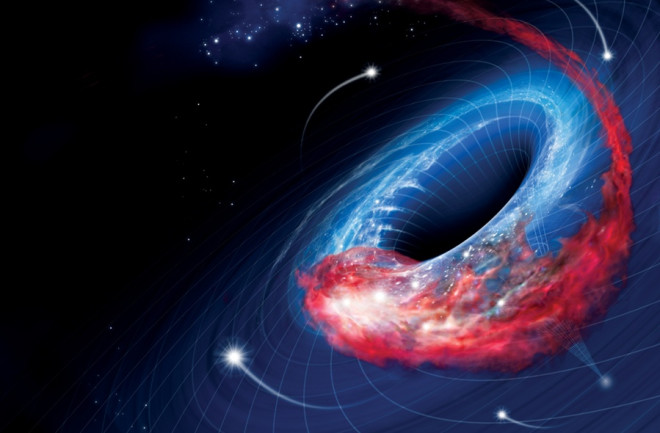The giant black hole in the middle of our galaxy stays pretty quiet most of the time, flaring up only occasionally. But it is due for a burst of activity any day now, as a large cloud of gas and dust continues to spiral toward the heart of the Milky Way.
With this sudden influx of material, the normally tranquil black hole — named Sagittarius A* (pronounced "A star") and as massive as 4 million suns — will roar to life, unleashing a fiery discharge of matter and radiation.
The cloud, dubbed G2, is expected to make its closest approach this year, although it could take decades for the black hole to finish digesting its ethereal prey. Sagittarius A* doesn't dine often, but when it does, it is (like other black holes) a messy eater, drawing in far more material than it can swallow. The vast amount of gas and dust sucked in by the black hole's intense gravitational pull creates an enormous traffic jam that prevents most of this stuff from ever making it into the black hole. Instead, the material keeps piling up.
As the pressure mounts, atoms and smaller particles grind against each other, heating to temperatures of billions of degrees. With no way in, the now-energized stuff ricochets back into space at nearly the speed of light, forming extended, luminous jets aligned along the black hole’s powerful magnetic fields. At least that’s how theorists think it works; they’re still in the dark about many details concerning these jets.
Nor can anyone predict exactly how the encounter between Sagittarius A* and G2 will play out. “We don’t know what’s going to happen, but we do know there could be some amazing fireworks in the galactic center,” says Shep Doeleman, an astronomer at MIT’s Haystack Observatory and the Harvard-Smithsonian Center for Astrophysics. “This may be a once-in-a-lifetime opportunity for observers because Sagittarius A* is the Goldilocks black hole, being large enough and close enough to resolve with Earth-based telescopes.” Consequently, astronomers all over the world have their sights trained on the galaxy’s inner core as the cloud makes its terminal plunge.

